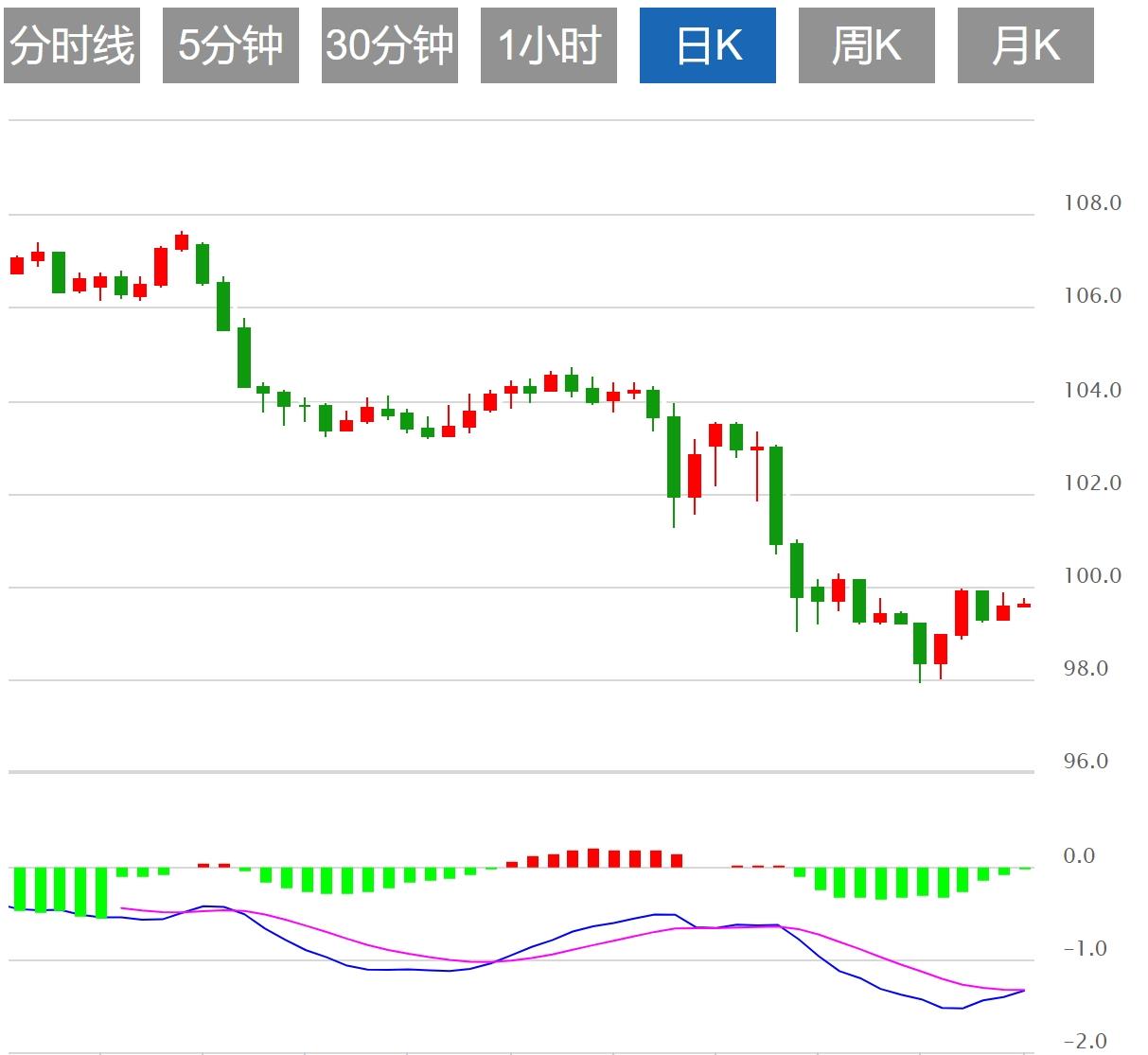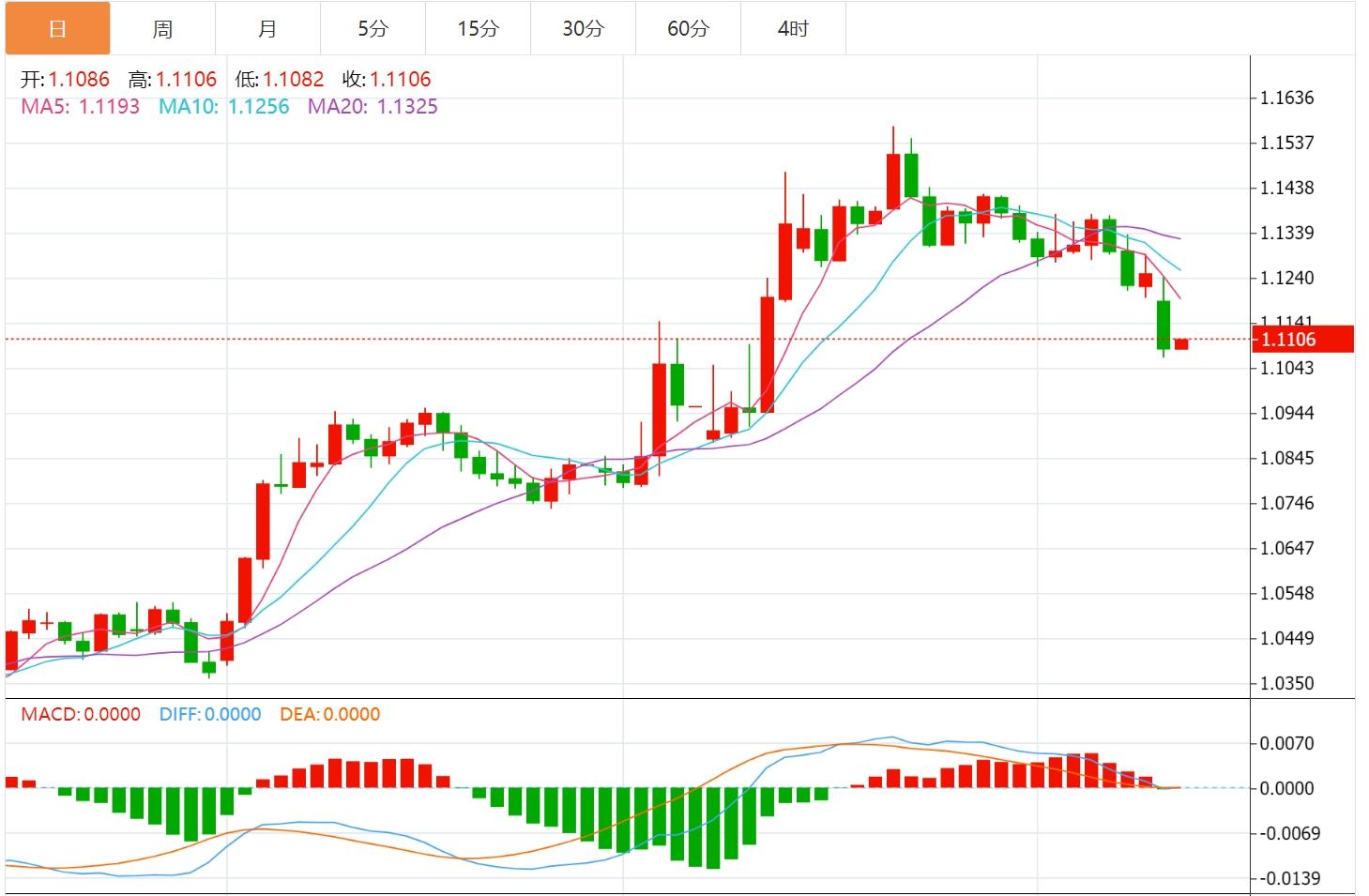Wonderful introduction:
Life needs a smile. When you meet friends and relatives, you can give them a smile, which can inspire people's hearts and enhance friendships. When you receive help from strangers, you will feel comfortable with both parties; if you give yourself a smile, life will be better!
Hello everyone, today XM Foreign Exchange will bring you "[XM Foreign Exchange Official Website]: The "truce" of Sino-US tariffs has triggered the market, and the US dollar index is expected to continue to rise." Hope it will be helpful to you! The original content is as follows:
On the Asian session on Tuesday, the US dollar index hovered around 101.66, and the US dollar index soared by 1.5% on Monday and broke through the 101 mark, setting a new high of 101.97 in the past two months. This has formed a double blow to gold: on the one hand, the dollar denomination makes gold more expensive for overseas buyers, and on the other hand, the rebound in U.S. Treasury yields have also weakened the attractiveness of interest-free assets.
Dollar: As of press time, the US dollar index hovered around 101.66. The news of tariff cuts triggered a chain reaction in the market. The yield on the 10-year U.S. Treasury bonds soared to 4.45%, approaching a high that had not been seen since early April. The widening of interest rate spread between the United States and other countries has caused the US dollar to appreciate relative to currencies in countries with lower yields. Some analysts believe that the chain effect of this correlation may lead to the market completely canceling expectations for the Federal Reserve's interest rate cut in 2025. Technically, the daily chart of the US dollar index shows that the recent trend has entered a significant upward channel. From the chart, the price rebounded from the low point of 97.92, forming a clear upward wedge structure. The current price has exceeded the key level of 101.50, and the important resistance level of 102.20 is tested. In terms of MACD indicators, the DIFF line and the DEA line form a golden cross, and the MACD bar chart turns into a positive value, indicating a short-term kinetic acceleration. The RSI indicator has climbed to the 56.53 level, in a neutral and strong area, indicating that the upward momentum has been strengthened but has not yet entered the overbought range. In addition, the CCI indicators continue to rise, reflecting the current strong characteristics of the market.



Data shows that British shoppers overcome concerns about the global trade war and significantly increased spending in April. Easter and sunny weather drove the sales of food, gardening equipment and clothing. The UK's overall BRC retail sales rate in April reached 7.0%. This is the largest increase in the month since the COVID-19 pandemic. As the UK experienced the most sunny April since the record in 1910, shoppers updated after a period of weak sales.Their wardrobe, clothing sales have rebounded. Another set of data released by Barclays shows that consumer spending rebounded similarly last month: The bank's consumer card transaction data increased by 4.5% compared with April 2024, the largest annual increase since June 2023. Barclays said this is the first time that spending growth has exceeded inflation in more than two years.
U.S. Treasury Department data showed that tariff revenue in April reached $16 billion, a surge of $9 billion from the same period last year, an increase of 130%. That set a record for the highest single-month tariff revenue in at least a decade, according to data compiled by Bloomberg. The surge in tariff revenues will help curb further expansion of the U.S. budget deficit. However, U.S. President Trump is seeking to reach a trade agreement with specific countries, and tariff revenue may decrease in the future. The U.S. federal government recorded a $1.05 trillion deficit in the first seven months of the fiscal year, an increase of 13% from the same period last year after adjusting for calendar year differences. Finance officials said that if the deferred tax factors that pushed up revenue in fiscal 2024 were excluded, the deficit in fiscal 2025 actually increased by 4%. In addition to tariffs, another revenue category that achieved growth in the fiscal year is the excise tax, which has increased by $10 billion in the past seven months. Finance officials said this is mainly due to the newly levied stock repurchase tax.
Two members of the ECB Management Committee said that given the high uncertainty of US President Trump's economic policy, the ECB must be cautious when deciding on the next rate measures. The ECB ECNegel and the ECA CRVA highlighted the challenges brought by the new U.S. administration, including the difficulties in formulating monetary policies in the euro zone. "We need to be humble when assessing the current situation," Eskriva said, adding that the ECB must gather more information, "try to clarify which factors prevail." Negle said: "In the decision on monetary policy, it is important to be cautious and not to over-emphasize specific announcements that may change soon."
Federal director Kugler said on Monday that the Trump administration's tariff policy may push up inflation, dragging downCumulative economic growth, even after lowering tariffs. "Trade policies are evolving and may continue to change, even this morning. However, even if tariffs remain near the levels currently announced, they may have significant economic impacts." Kugler pointed out that the current average tariff rate in the United States is still much higher than the level in decades. She added: "If tariffs are still much higher than earlier this year, the impact on the economy will not change, including pushing up inflation and reducing economic growth."
Deutsche Bank analyst George Salaveros said in a report that the impact of recent progress in easing global trade wars on the dollar is unclear. He said more positive news about U.S. trade in recent weeks has benefited more to the rest of the world in terms of economic growth than to the United States. This is not good for the US dollar, especially currencies that are sensitive to economic growth. However, for external financing in the United States, a less hostile U.S. government is obviously more favorable to the dollar because it does not hinder the inflow of funds too much.
The above content is all about "[XM Foreign Exchange Official Website]: The "truce" of Sino-US tariffs triggered the market, and the US dollar index is expected to continue to rise", which is from XM ForeignThe editor of Hui carefully organized and edited it, hoping it will be helpful to your transaction! Thanks for the support!
Only the strong know how to fight; the weak are not qualified to fail, but are born to be conquered. Step up to learn the next article!